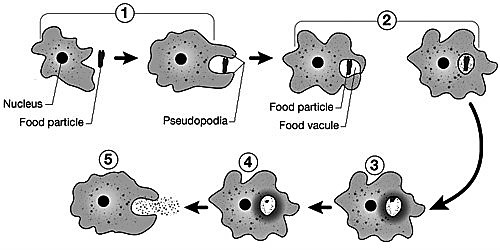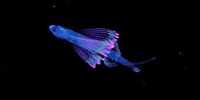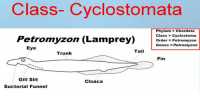Energy is required for physiological function. Food is the source of this energy. Nutrition is a process, By this process, Amoeba performs its food ingestion, digestion, absorption, assimilation and excretion of faecal materials Body reorganization and growth also occur through this process. Amoeba is an important protozoan found in fresh water. It feeds on microscopic plants and animals present in water.
Food: Amoeba takes small algae, bacteria, diatom, and various microorganisms as its food. The mode of nutrition in amoeba is Holozoic.
The process of intake of food: Amoeba has no digestive system. For the intake of food, there is no mouth or any other fixed organ. At the time of food intake, Amoeba becomes attached to a surface and with the help of pseudopodia ingest food by various methods. It can select organic and inorganic foods. It takes about 2 to 3 minutes to ingest the food. Amoeba intakes food mainly by the following five processes:
- Circumvallation
- Circumfluence
- Import
- Invagination
- Pinocytosis
Circumvallation: In this process, Amoeba takes mobile and solid food substances. With the help of pseudopodia, it surrounds the food material. Without touching the food material, the edges of the pseudopodia come close together and with the ectoplasmic membrane form the food vacuole along with water. When the pseudopodia surround the food material it looks like a cup. It is called “Food cup”. The ectoplasm transforms into endoplasm and protects the protoplasm. The walls of the food vacuole were made of ectoplasm which becomes internal and changes into endoplasm. This method of ingestion is used for capturing live prey.

Circumfluence: In this process, Amoeba takes immobile food materials. Immediately after coming in contact with the food material, amoeba forms a “food cup” and by stretching the pseudopodia it brings the enclosed food in direct contact with the body. By repeating this process, the Amoeba can ingest and roll up long filaments of algae. In this way, Amoeba takes the food material inside the body. In other species of Amoeba, food is ingested by import and invagination.

Import: If any food material comes on its body, by being motionless and without stretching any pseudopodia, Amoeba makes the food inactive. In Amoeba verrucosa, food comes into contact with the animal and sinks passively into the body. Then the inactive food material is taken inside the body. This is called the import process. It absorbs and devours filamentous algae in this way.
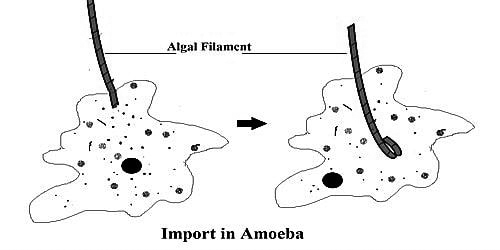
Invagination: When the body of amoeba comes in contact with any food particle it secretes sticky substance and fixes it with the body surface. Besides Amoeba secretes a kind of toxic juice from the body which kills the living food material. The ectoplasm along with the food enters the endoplasm in the form of a tube. Then the plasma membrane disappears and forms a food vacuole, the food particle is sucked in, the plasmalemma disappears and ectoplasm changes into endoplasm. In this process, no pseudopodium is required to receive the food material. The newly ingested organism may remain active for a time in the large primary food vacuole.
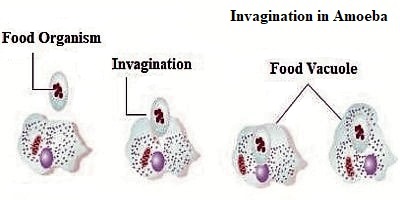
Pinocytosis: Pinocytosis does not take place through the whole surface of the body of the amoeba. In this process, Amoeba takes liquid food materials. At many times in different parts of the body surface of Amoeba, the plasmalemma gets folded and enters into the endoplasm,” as a result of which a tube-like structure is formed. This tube is called a pinocytic tube. With liquid food materials, the tube forms pinosome or small cavities, which later on is taken within the endoplasm. It is understood that plasmalemma along with the colloidal food material forms pinocytosis channels which run from the surface deep into the endoplasm.

